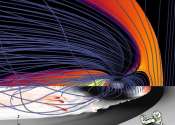Using big data to combat catastrophes
In March 1989, a tripped circuit in the Hydro-Québec power grid left 6 million people without electricity. A week earlier, an unusually harsh snowstorm had strained the region; the day before, a solar flare and accompanying ...









